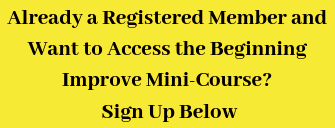Download the sheet music and follow along.
Purchase link for the sheet music and backing track is here
Video transcript:
The most important thing to talk about in this song is the triplets and the triplet feel that it has. If you listen to the song. it has a very heavy triplet feel. It’s all about the triplets and we have to feel that because right off the bat the piano intro is made up of triplets, which lays down the whole foundation and groove for this song.
The two groups of 8th note triplets is preceded by a triplet that doesn’t look the same. This first triplet has a quarter note followed by an eighth note. This sounds just like a dotted quarter not and could have been written that way as well but I chose to use the triplet instead because this song is so entrenched in that triplet feel.
This is repeated near the end with the saxophone playing that exact same figure the piano does in the intro. The other thing which happens even more here is the quarter note triplet as opposed to the quarter note triplets we just talked about. The first bar of the second line “on blueberry hill”. Quarter note triplets are twice as long as eighth note triplets. Look at the repeat sign after the 2nd box. “The wind in the willow played” which is the same thing.
The other main thing to get out of this tutorial is the embellishment part. One thing I can tell you is that I have a mini course covering quite a few of these embellishments. This is your way of making even a simple song like this jump off the page even more by putting some of these embellishments in. Some people call them ornamentation or ornaments. If you want to learn a few of these like I’m using in this song, I’ll leave a link for the Embellishment Mini-Course which has 2 or 3 videos showing you 5 or 6 of these nice and useful everyday embellishments you can use.
I will go over a couple of these embellishments. The first one is a really quick descending glissando that I do just before the very first note of the melody. Which is a D on the Bb chart and an A on the Eb chart. So instead of just starting on the note I play a little flourish of notes which I call a glissando, going from A down to D. It’s a really cool thing to do and ll you need to do is hit your A, G, F, E. Or F# because it goes so fast it doesn’t really matter.
On the alto chart you start on an A so go up a 5th to an E then come down to a D, C# or C, B, and A.
Another one of my favorite embellishments is the mordant. It’s just like a one note trill up then down to the next note. So instead of just playing the F# to E as written I’m adding an upper G, back down to the F# then the E. But it’s done quickly. If you listen to what I play and look at the notes you’ll see that I add the mordant quite often. It’s one of my most used embellishments.
Another one you’ll hear throughout is the scoop, where I’m scooping into a note. Again, these and others are covered in the Embellishment Mini-Course which I’ll leave a link to here.
Trills
One that I’ll go over here with you is near the end. This is where I do the intro that copies the piano intro on sax. You’ll see the trill marking over the note. You can trill that note several ways. Play the B and using the side key C with your index finger. I didn’t do it that way. I trilled it using the, that would be trilling it using the half step above which works. You can also trill it using a whole step above which is the C#.
I used this one; play the B and trill with the side palm D which is played with the bottom of your index finger, down low where it meets the palm. It’s a little harder, physically. You have to almost shake your whole arm, and your sax shakes a bit.
For the alto, that top note you’re trilling is an F# and so of course you can trill it with a G. But if you want to do that really cool minor 3rd trill do it this way; play your F#, then you’re trilling up to the A. You’re not gonna play F# then A, you’ll hold the F# fingering down with the right hand while fingering the A with your left. You get that minor 3rd trill and it’s a bit more aggressive. A little more gutsier and bluesier I think. If you trill a semi-tone or whole-tone away it’s a little more… well, it’s not as dramatic right? You can hear the difference.



Great compositions johnny as always great music and easy to follow scores and backing tracks.
Me encantaría que sacaras el arreglo para saxo tenor de la canción Ain’t that a shame -Fats Domino
Ain’t that a shame…Yes Zheryll that’s another good one! May do it later when time permits me.